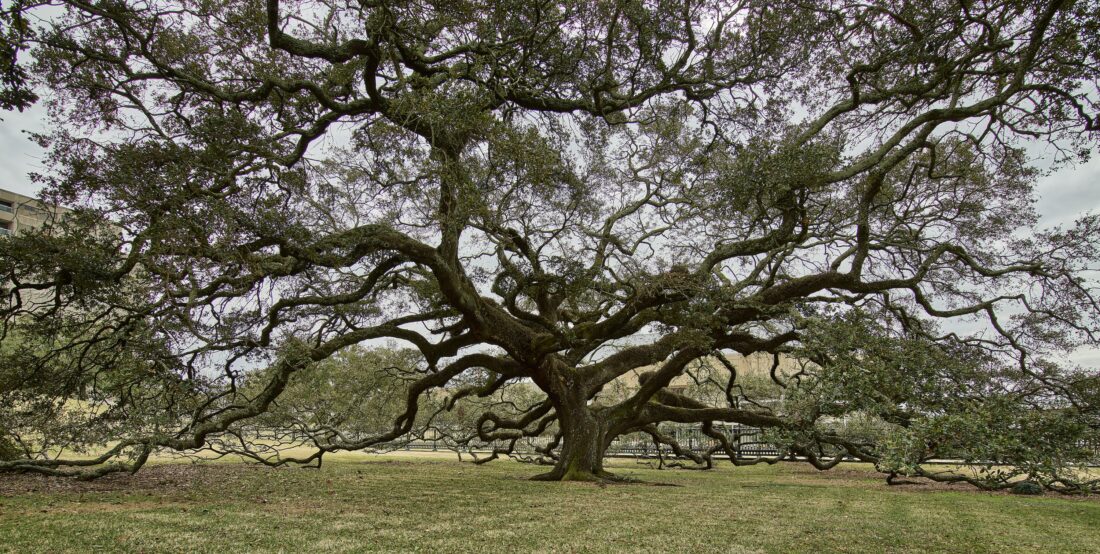“Those who own older houses with live oaks on the property adore their trees as much as the house,” says Michael Murphy, a master arborist based in Beaufort, South Carolina. “The live oaks are sacred to them, and they see themselves as the steward of these trees for future generations.” To that end, Murphy advises property owners on just how to preserve their aging trees—possibly in perpetuity.
Can a live oak forever?
Murphy believes so. A live oak can eventually grow out so far that it can’t hold itself up anymore, but there aren’t many other threats to these trees. “So far, there’s no insect or disease that will kill a live oak, so besides fire or a storm or removing oxygen in the soil, the only way they are going to die is if they fall apart,” he explains.
Aside from being one of the heaviest and strongest trees around, live oaks are resilient in one other very important way. For many trees, any cut is a wound in which decay can set in. Live oaks (along with crape myrtles), though, are part of a group that isn’t as susceptible to that decay thanks to a process called “reiternation,” whereby the cut area sprouts back even stronger than before.
Research indicates that an arborist can support a live oak’s longevity through “reduction pruning” every ten to fifteen years, a method long used in Europe and the United Kingdom. The method makes the tree as compact as possible by taking weight off the outside limbs, because the key to longevity is in preserving the inner canopy. “It’s so important to the structure and the health,” Murphy explains. “The inner canopy is the future of the tree.” When he learned to prune in the seventies, reduction pruning wasn’t yet the accepted practice, and arborists would make most of their cuts from the center of the tree so people could get more sun on their lawns. “This method is called lion-tailing limbs,” Murphy says. “Imagine a lion tail—it has nothing on it all the way to the end, where’s there’s that little puff.”
A healthy, intact inner canopy also allows the tree to play host to a multitude of beneficial bacteria, fungi, and other microorganisms. “It’s like Horton Hears a Who!…there’s a whole little world in there,” Murphy explains. Plus, the tree is more resilient to storms, as the inner canopy absorbs some of the force of the winds and keeps the outer branches from whipping around and straining the tree.
Besides pruning, there’s also soil and watering to think about. Ideally, a live oak should be mulched all the way to the dripline—the area directly under the outer circumference of the branches—in order to keep the root system healthy. It’s also important to leave the water sprouts (the shoots that develop from dormant buds on the trunk or large branches of a tree), as they represent the future inner canopy. With these strategies, Murphy believes, a live oak can simply go on growing forever.
Unfortunately, due to years of logging in the United States, precious few examples of ancient live oaks like the Angel Oak on Johns Island, South Carolina, remain. “And for years, we didn’t know how to take care of the trees we do have,” Murphy points out. “But now we know, and imagine what could be possible if we do things right…Live oaks are built to live forever.”








